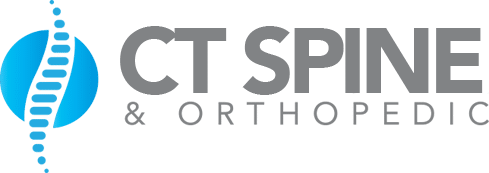In the domain of spinal surgery, Laminoforaminotomy has proven to be a formidable solution for a myriad of conditions, offering patients a chance at a pain-free existence they may have deemed unattainable. While clinical data and surgical statistics hold their value, there is an undeniable power in personal testimonies. Herein, we present a selection of real-life success stories from individuals who underwent this procedure, each account echoing a unique journey of resilience and recovery. These narratives not only illuminate the human side of this medical advancement but also prompt us to further explore its potential.
Understanding Laminoforaminotomy
Laminoforaminotomy, a surgeon’s method of alleviating spinal discomfort, is a complex surgical procedure that involves the removal of a small portion of the lamina and foramen to relieve pressure on the spinal nerves. This operation is typically performed to treat conditions such as herniated discs, spinal stenosis, and bone spurs. By creating more space for the nerves, the procedure helps to alleviate pain and improve mobility.
However, like all surgical procedures, laminoforaminotomy carries certain risks. These may include infection, nerve damage, and potential complications from anesthesia. It is also possible that the procedure may not completely alleviate the patient’s symptoms. Hence, it is essential for patients to have a thorough understanding of these surgical risks before deciding on this treatment plan.
Alternative treatments to laminoforaminotomy may include physical therapy, pain management through medication, and lifestyle modifications. These non-surgical options can often be effective in managing symptoms and improving quality of life. However, their effectiveness can vary greatly depending on the individual’s specific condition and overall health. Thus, it is important for each patient to discuss these alternatives with their healthcare provider to determine the most appropriate treatment plan.
Patient Story: Living Pain-Free
From shifting now to a narrative perspective, let us analyze a patient’s journey from enduring chronic pain to achieving a pain-free life after undergoing a laminoforaminotomy procedure. This case study will detail the individual’s medical history, the severity of their pre-surgery symptoms, and their recovery process post-surgery. Through this examination, we aim to provide a thorough understanding of the transformative impact of laminoforaminotomy on patients suffering from severe spinal conditions.
Pre-Surgery Chronic Pain
Enduring years of agonizing chronic back pain, the patient finally discovered a life of relief and comfort post-laminoforaminotomy surgery. Prior to the operation, the patient had exhausted numerous pain management techniques, including prescription medications, physical therapy, and nerve blocks, all of which provided temporary relief but failed to address the root cause of the pain. Alternative therapy options such as chiropractic treatments, acupuncture, and yoga, were also explored, yet the chronic pain persisted. The patient’s case exemplifies the frustration and despair often associated with chronic back pain, highlighting the limitations of conventional and alternative therapies in providing lasting relief. This pre-surgical narrative underscores the necessity for a more definitive solution, like laminoforaminotomy, when dealing with persistent, debilitating back pain.
Post-Procedure Recovery Journey
Following the successful laminoforaminotomy procedure, the patient commenced on a transformative journey towards a pain-free existence, marked by diligent post-operative care, disciplined physical therapy, and a renewed sense of hope. Post surgery nutrition played an essential role in their recovery, with a balanced diet facilitating the healing process and replenishing their body’s energy reserves. Ensuring emotional wellbeing post procedure was equally important. The patient sought professional psychological support to cope with the emotional aftermath of the surgery. This involved managing anxiety, overcoming fears about re-injury, and rebuilding confidence in their physical capabilities. The journey wasn’t without challenges, but the patient’s perseverance and resilience, fueled by the prospect of a pain-free life, made the recovery process a remarkable success story.
Overcoming Sciatica: A Success Tale
Battling the debilitating pain of sciatica, one patient found relief through laminoforaminotomy, a minimally invasive spinal surgery, marking a significant milestone in their journey to recovery. Before considering surgery, the patient explored non-surgical alternatives, such as physical therapy, medication, and sciatica exercises designed to reduce nerve pressure and inflammation.
Despite initial improvements, the patient’s pain persisted, impeding daily activities. After thorough diagnostic tests, the patient was diagnosed with severe sciatica, a condition caused by the compression of the sciatic nerve, often due to a herniated disc or spinal stenosis.
Considering the severity of the condition and the limited success of non-surgical interventions, laminoforaminotomy was recommended. This procedure involves removing a small portion of the lamina and foramen to relieve nerve compression. It offered a promising alternative to traditional open back surgery, boasting shorter recovery times and less post-operative pain.
Post-procedure, the patient reported a significant reduction in sciatic pain, validating the efficacy of laminoforaminotomy. This case underscores the potential of this minimally invasive procedure in treating severe sciatica when non-surgical alternatives, including sciatica exercises, fail to yield sufficient relief. The patient’s successful recovery serves as an encouraging proof of the potential of laminoforaminotomy in managing such debilitating conditions.
Journey to Recovery: Spinal Stenosis
Moving to the topic of spinal stenosis, it is critical to understand that the journey towards recovery post-laminoforaminotomy is marked by distinct stages. An initial diagnosis serves as the catalyst, setting in motion the process towards surgical intervention and the subsequent rehabilitation. This exploration will detail the nuances of these stages, from the manifestation of spinal stenosis symptoms to the thorough post-procedure rehabilitation journey.
Diagnosis: Spinal Stenosis
Spinal stenosis, a debilitating condition often requiring extensive treatment, starts with a detailed diagnosis process, which is critical to determining the most effective path to recovery. The diagnosis process often involves recognizing ‘Stenosis Symptoms’ and considering ‘Non surgical Alternatives’ before recommending surgery.
Key elements of the diagnosis process include:
- Thorough medical history: This involves evaluating the patient’s past and current health conditions, including their pain levels, mobility issues, and any previous treatments.
- Physical examination: Here, the doctor examines the patient’s posture, range of motion, and physical condition to identify areas of pain or discomfort.
- Diagnostic tests: These may include X-rays, CT scans, or MRI scans to provide a detailed view of the spine and identify any narrowing or blockages.
The above steps guide the medical team in determining the most effective treatment plan.
Post-Procedure Rehabilitation Journey
Once a thorough diagnosis has led to a laminoforaminotomy procedure, the patient’s journey towards recovery truly begins with a carefully planned post-procedure rehabilitation journey. This involves meticulously crafted therapy techniques and a targeted rehabilitation diet designed to expedite healing and promote overall well-being. The therapy techniques generally encompass physical therapy sessions aimed at strengthening the back and core muscles, improving flexibility, and enhancing overall mobility. Concurrently, the rehabilitation diet is devised to guarantee peak nutrient intake, focusing on proteins for tissue repair, vitamins and minerals for bone health, and anti-inflammatory foods to reduce swelling. The interplay of these factors plays a significant role in ensuring a successful recovery, underlining the importance of adhering to the post-procedure rehabilitation regimen.
An Athlete’s Return to Form
In the domain of sports, numerous athletes have effectively reclaimed their competitive edge post-laminoforaminotomy, reinstating their physical prowess and demonstrating the procedure’s efficacy. The impact of surgery on athletic performance is twofold; it alleviates debilitating pain, improving the quality of life and, simultaneously, enhances the athlete’s performance by removing the physical limitations caused by spinal conditions.
The following real-life examples underscore the transformative potential of laminoforaminotomy:
- A professional swimmer, who suffered from chronic back pain, returned to competitive swimming within six months after surgery, breaking her previous records.
- A football player, sidelined due to a herniated disc, made a triumphant return to the field post-laminoforaminotomy, leading his team to a championship victory.
- A tennis player, whose career was threatened by spinal stenosis, regained his form after the procedure, winning numerous tournaments subsequently.
These success stories provide tangible proof of the effectiveness of laminoforaminotomy in restoring athletic performance. The surgery’s impact extends beyond the alleviation of pain, as it enables athletes to push their physical boundaries and achieve new heights of excellence. Hence, laminoforaminotomy offers a beacon of hope for athletes plagued by spinal conditions, promising a return to form and a continuation of their sporting journey.
Patient Experience: Regaining Mobility
Beyond the athletic domain, laminofarminotomy has been instrumental in transforming the lives of many individuals, enabling them to regain mobility and lead an active lifestyle despite their previous spinal issues. However, like any surgical procedure, this too comes with its share of surgery apprehensions. Fear of the unknown, possible complications, and concerns about post-surgery lifestyle often plague potential patients.
Despite these apprehensions, numerous success stories are evidence to the efficacy of the procedure. A meticulous approach to preoperative planning and risk stratification alleviates many fears, ensuring a smooth surgical journey. The technique aims primarily to relieve nerve root compression, which in turn results in improved mobility. Patients have reported increased ease in performing daily tasks, enhanced physical capacity, and improved overall mobility.
Post-surgery lifestyle is a critical aspect of the recovery phase. By adhering to a carefully planned rehabilitation program, patients can gradually regain strength and flexibility, further enhancing their mobility. In many instances, individuals have not only returned to their pre-problem mobility levels but have surpassed them, leading to a more active and fulfilling life. As a result, despite initial surgery apprehensions, laminoforaminotomy has proven a potent tool in regaining patient mobility.
The Road to a Better Quality of Life
The journey towards improved quality of life often begins with overcoming painful health challenges, a reality experienced by many undergoing laminoforaminotomy. This surgical procedure has been instrumental in driving transformational changes in patients’ lives, as evident from numerous success stories. Post-surgery, significant improvements in patients’ conditions have been reported, marking a critical step in their journey towards a better, healthier existence.
Overcoming Painful Health Challenges
Traversing through painful health challenges often becomes a pivotal journey towards an enhanced quality of life, particularly for patients who have experienced significant relief following a successful laminoforaminotomy. The path to wellness is paved with pain management techniques and an understanding of the mental health impact of chronic pain.
To overcome these health challenges, patients typically:
- Invest in various pain management techniques, such as medication, physical therapy, and alternative approaches like acupuncture.
- Address the mental health impact, often seeking psychological support to cope with the emotional toll of chronic pain.
- Pursue surgical interventions like laminoforaminotomy when conservative treatments fail to provide adequate relief.
Overcoming painful health challenges is a multifaceted process, demanding physical endurance, mental resilience, and medical intervention.
Transformation Through Laminoforaminotomy
Undergoing a laminoforaminotomy has proven to be a transformative experience for many patients, leading them down a road to a substantially improved quality of life. Despite initial surgery apprehensions, patients report significant relief from chronic pain, resulting in enhanced daily functionality and an uplifted mental state. An analytical review of patient testimonies shows a correlation between the successful procedure and an increased capacity to engage in physical activities previously hindered by pain. Part of this transformation also includes improved mental wellness post surgery, with patients reporting lower levels of anxiety and depression. While this surgical intervention can be intimidating, the potential life-altering benefits typically outweigh the fear, fostering resilience and optimism in patients as they journey towards a healthier, pain-free life.
Improved Life Post-Surgery
Embracing a new lease on life, patients post-laminoforaminotomy often experience a substantial enhancement in their overall quality of life, marked by a notable reduction in chronic pain and a renewed ability to engage in daily activities with ease. This improvement is often linked to proper surgery preparation and ideal post-op nutrition.
- Surgery Preparation: Thorough preparation reduces surgical risks, increases the probability of successful outcomes, and facilitates faster recovery.
- Post Op Nutrition: A balanced diet rich in proteins, vitamins, and minerals aids in healing, boosts energy levels, and mitigates post-operative complications.
- Engagement in Daily Activities: Patients report resuming hobbies, work, and exercise with greatly reduced or no pain, contributing to their psychological wellbeing.
Triumph Over Chronic Back Pain
Despite the debilitating nature of chronic back pain, numerous patients have found substantial relief and regained their quality of life through the surgical procedure known as laminoforaminotomy.
This triumph over chronic back pain often comes after trying a variety of pain management techniques and holistic healing approaches, with limited success. Laminoforaminotomy, a minimally invasive spine surgery, has proven to be a more effective and lasting solution for many. This procedure decompresses the spinal nerves, providing instant relief from chronic back pain that traditional methods could not provide.
Studies indicate that post-procedure, patients reported greatly reduced pain, increased mobility, and improved overall physical health. The procedure’s success has not only been measured through pain reduction but also in the renewed ability of patients to engage in daily activities without the constant burden of back pain.
Additionally, the holistic healing approaches previously utilized by the patients have been found to complement their post-surgical recovery. Practices such as yoga and meditation aid in the healing process, reducing stress, and promoting overall well-being.
Persistent Neck Pain: A Victory Story
Just as laminoforaminotomy has proven to be a successful intervention for chronic back pain, it has also provided significant relief to those suffering from persistent neck pain, heralding a new chapter of victory in their health journey.
Understanding the triggers of neck pain is important to treatment. These triggers often manifest as:
- Important posture: Habitually hunching over a computer or cell phone can strain the neck.
- Osteoarthritis: This joint disorder can cause neck pain as we age.
- Whiplash: Sudden jerking of the head in an accident can result in neck pain.
Alternative therapies, such as chiropractic care, acupuncture, and physical therapy, have been utilized with varying degrees of success. However, when these methods fail to provide relief, and the pain becomes chronic, laminoforaminotomy emerges as a highly effective surgical solution.
Laminoforaminotomy succeeds by removing the portion of the vertebra causing nerve compression, reducing neck pain. This procedure has revolutionized the journey of neck pain sufferers, enabling them to reclaim their lives from the grips of chronic discomfort. As evidenced by numerous patient testimonials, laminoforaminotomy indeed has written a victorious chapter in the book of neck pain management.
Patient’s Journey Through Spinal Surgery
Exploring through the intricate process of spinal surgery, a patient’s journey often begins with an understanding of their diagnosis, followed by exploring suitable surgical options such as laminoforaminotomy. This journey, though clinically necessary, is often accompanied by surgical anxiety, a common psychological response to the anticipation of invasive medical procedures.
To assuage this anxiety, healthcare providers offer patient support in the form of detailed education about their condition, the surgical procedure, and expected outcomes. This process involves in-depth discussions, visual aids, and sometimes, testimonials from patients who have successfully undergone the same procedure.
The decision to proceed with surgery is then made collaboratively, taking into account the patient’s health status, personal preferences, and lifestyle. As the surgery date approaches, a pre-operative checklist is reviewed with the patient, ensuring a clear understanding of pre-surgery preparations and post-surgery recuperation.
On the day of surgery, the patient is guided through the pre-operative phase, the surgery itself, and the immediate post-operative period, with constant reassurance and monitoring by the medical team. The journey through spinal surgery requires not just medical expertise, but also empathetic patient support, to make sure a positive experience and successful outcome.
Celebrating Successful Post-Surgery Outcomes
After maneuvering the thorough process of spinal surgery, a significant point of celebration and relief for both the patient and healthcare team is observing successful post-surgery outcomes. The process of Laminoforaminotomy, although complex, has a high success rate and elicits a considerable improvement in the post-operative lifestyle of the patient.
The celebration of successful outcomes is not merely about the completion of the surgical process. It encompasses several factors such as: – Reduction in pain and discomfort that initially led to surgery – Restoration of mobility, hence improving quality of life – Elimination of the need for pain medication, indicating a successful recovery
Despite the initial surgery apprehensions, patients who have undergone this procedure often express contentment over their decision, appreciating a significant improvement in their lifestyle. They are able to engage in activities that were previously hindered by pain and mobility issues. The healthcare team also rejoices at these successful outcomes, reinforcing their commitment to provide the best patient care. Each successful outcome is a statement to the effectiveness of Laminoforaminotomy, adding to the growing body of success stories.
Frequently Asked Questions
What Are the Potential Risks or Side Effects of a Laminoforaminotomy Surgery?
Potential risks of laminoforaminotomy surgery include infection, nerve damage, bleeding, and spinal fluid leaks. Post operative complications can arise from improper surgery preparation, such as adverse reactions to anesthesia or uncontrolled post-surgical pain.
How Long Is the Typical Recovery Period After a Laminoforaminotomy Procedure?
The typical recovery period after a laminoforaminotomy procedure is 3-6 weeks, depending on individual health conditions. Pain management strategies and post-surgery nutrition play critical roles in facilitating a smooth and successful recovery process.
Are There Any Lifestyle Changes That Need to Be Made Post-Surgery to Ensure a Successful Recovery?
Following laminoforaminotomy, lifestyle modifications such as adopting a balanced post-surgery nutrition plan and engaging in physical therapy can greatly enhance recovery success. These changes facilitate healing and restore spinal function effectively.
How Has Laminoforaminotomy Surgery Evolved Over the Years?
Laminoforaminotomy surgery has greatly evolved due to surgical advancements, moving from traditional open procedures to minimally invasive techniques. This evolution has improved patient outcomes, reduced recovery times, and minimized surgical risks greatly.
What Are the Alternatives to Laminoforaminotomy Surgery for Treating Spinal or Neck Pain?
Alternatives to laminoforaminotomy surgery for spinal or neck pain include non-surgical treatments like physical therapy, chiropractic care, acupuncture, and pain management techniques such as injections, medications, and lifestyle modifications.



